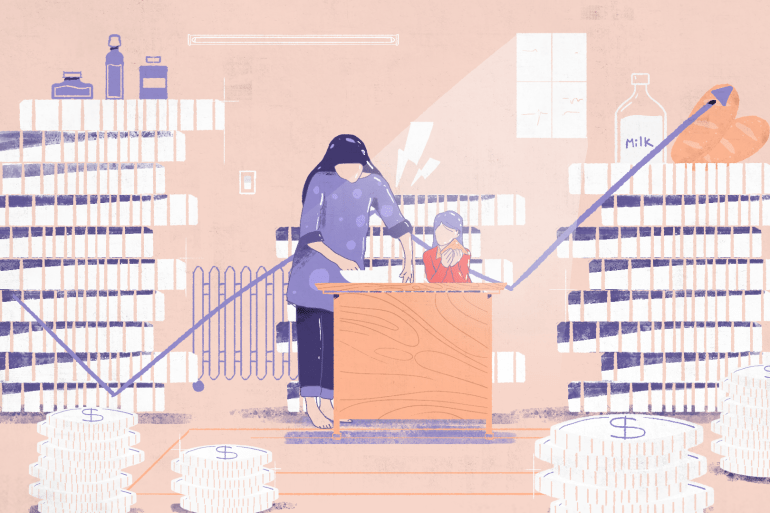When to have the booster jab if you have recently had COVID-19 | Health
Rates of the Omicron variant remain high. However, it has been shown that boosters do offer a good degree of protection against Omicron. So, many who have had a recent infection are wondering how long they should wait before getting the booster.
According to the UK’s National Health Service, people should wait 28 days after testing positive for COVID-19 before getting their booster shots. This is to ensure that the symptoms of the infection are not confused with any potential side effects from the vaccines.
The Centers for Disease Control and Prevention (CDC) in the US suggests waiting until you have fully recovered from any symptoms and your isolation period has ended after getting COVID-19 before booking a booster shot.
Evidence shows that getting a vaccine after you recover from a COVID-19 infection provides added protection to your immune system. So, it is certainly worth getting the booster shot even though you may have recovered from COVID-19 recently.
What the rising cost of living may mean for your health
One of the things the COVID-19 pandemic has highlighted is how global adversities tend to hit the most vulnerable in society the hardest. We saw that those who were socially disadvantaged, had jobs that meant they were unable to work from home and who lived in overcrowded houses caught COVID-19 at higher rates than those who were more affluent. As we move to a stage of the pandemic where – in wealthier countries – vaccines and medicines can now offer a layer of protection against serious illness, poorer people are now being hit by another crisis: the rising cost of living.
There are many reasons why the cost of living is rising globally. Firstly, wholesale prices of oil and gas have risen to a seven-year high, mainly because of increased demand in Asia and a cold winter in Europe that depleted gas reserves. Secondly, during the height of the pandemic, many manufacturing factories had to close, so there is now a shortage of goods despite no shift in demand, driving up prices of common household items and building supplies. Shipping costs have also gone up to meet the demand to have goods delivered to retailers, but it is the consumers who end up bearing these costs. At the same time, public borrowing increased during the pandemic, and many countries have also seen a rise in taxation and inflation rises on many goods.
 [Muaz Kory/Al Jazeera]
[Muaz Kory/Al Jazeera]Meanwhile, wages have not increased and much of the financial support governments were providing to their citizens has now ended. This has left those on lower incomes struggling to heat their homes, provide food for their families and even having to limit essential trips out in cars due to fuel costs. All of this is bound to have adverse effects on the physical and mental health of these communities.
With energy prices going up, fuel poverty is on the rise with families on low incomes forced to ration the amount of energy they use, leading to colder homes. When people live in cold homes, their blood vessels constrict to stop heat from being lost as blood moves around the body. This narrowing of blood vessels causes an increase in blood pressure. One study demonstrated that a one-degree-Celsius lowering of room temperature raised blood pressure by 1.3mmHg. For some older people, this can lead to dangerously high blood pressure. Sustained raised blood pressure can lead to an increased risk of heart attacks and strokes, something that has been linked to colder homes.
Cold, damp homes also increase the risk of respiratory conditions such as pneumonia, bronchitis and asthma exacerbations, resulting in more consultations with GPs and hospital admissions.
Colder homes have also been associated with a quadruple increase in mental health illnesses, including anxiety and depression. People who lived in an indoor temperature of 21C (70F) or above were 50 percent less likely to suffer from anxiety and depression compared with those who lived in an indoor temperature of 15C (59F) or below.
Children from poorer backgrounds also have worse health outcomes when compared with those from wealthy backgrounds and the rising cost of living is only set to make this worse. Babies born into the poorest families are on average 200g lighter than those born into richer families. They are also more likely to:
- die within the first year of being born
- suffer from mental health issues
- do worse in meeting educational achievements
The rates of malnutrition, obesity and Type 2 diabetes are also higher in children from the poorest families in Western nations. Children growing up in overcrowded houses with poor access to outdoor spaces are more likely to be killed in road traffic accidents, fires, accidental drownings and accidental poisonings. And as more families are pushed into poverty with rising living costs, there is a worry we may see more of these incidents.
The solutions to these issues are not straightforward, but the first step must be to recognise the serious health implications that the rising cost of living is going to have on so many families. Governments need to look at how to protect the most vulnerable in their societies by shielding them from tax rises and offering financial support schemes for those who need them most. We must not let the gulf between the rich and poor that has been exacerbated by the COVID-19 pandemic widen further as times get harder for so many.
Reader’s Question: What are the factors that increase the risk of getting long COVID?
Long COVID refers to continuing symptoms that can last weeks and months after a SARS-CoV-2 infection. It can affect even those who have mild symptoms in the acute phase. The reason why some people develop long COVID and others don’t is a question that has remained largely unanswered, but a group of scientists believe they have identified four factors that increase the risk of an individual suffering from long COVID.
The study followed 209 people who tested positive for COVID-19 and took blood samples and nasal swabs at regular intervals at two and three months looking for biological markers that could predispose an individual to long COVID.
 [Muaz Kory/Al Jazeera]
[Muaz Kory/Al Jazeera]The first factor they identified was the level of viral genetic material in the blood shortly after infection – often referred to as the “viral load”. The higher the viral load, the more likely the people being studied were to suffer from long COVID. High viral loads often happen when people are exposed to high levels of the SARS-CoV-2 virus over a sustained period of time. This can occur in a high-risk healthcare setting or in poorly ventilated indoor spaces where infected people are continuously breathing out the virus, it then lingers in the air and others can easily breathe it in.
The second factor was the presence of autoantibodies. These are different to antibodies that are used to fight off infection. Autoantibodies are immune cell proteins that usually occur when the immune system has overreacted to a threat and does not “switch off” even after the threat has been cleared. These autoantibodies may then start attacking healthy tissue and cells. Autoantibodies play a role in diseases such as rheumatoid arthritis and lupus. The study found the higher the level of autoantibodies in an individual, the higher their risk is of developing long COVID.
The presence of the Epstein Barr virus (EBV) was the third factor. EBV is a common virus that causes mononeuclosis or glandular fever, a throat infection usually found in younger people. After infection, the virus is known to lie dormant in cells for many years. It can become reactivated when a person is biologically stressed, such as with a COVID-19 infection. The researchers were quick to point out that the study does not definitely connect the two viruses, but they found higher levels of EBV in the blood of those who developed long COVID.
The fourth factor is the link between Type 2 diabetes and long COVID. The researchers found a significant association between the two. It’s possible that Type 2 diabetes alters the immune response to the virus, thereby increasing the risk of long COVID. High levels of insulin, which can occur in Type 2 diabetes patients, can cause low-level inflammation in the body and put the immune system on high alert which may increase the risk of an overreaction to SARS-CoV-2 and continuing symptoms after the virus has cleared. The researchers said there may be other pre-existing conditions that may also increase the risk of long COVID that were not sufficiently present in their study cohort.
The study, although of a small cohort, helps highlight the risk factors for long COVID. It is important to understand the condition to help support those who have continuing symptoms. It can also help us come up with treatment options and measures that may reduce the incidence of the illness in the first place.





Pingback: Bubble Tea
Pingback: David T Bolno
Pingback: ประกันรถยนต์ออนไลน์
Pingback: 웹툰 미리보기
Pingback: superkaya88 online